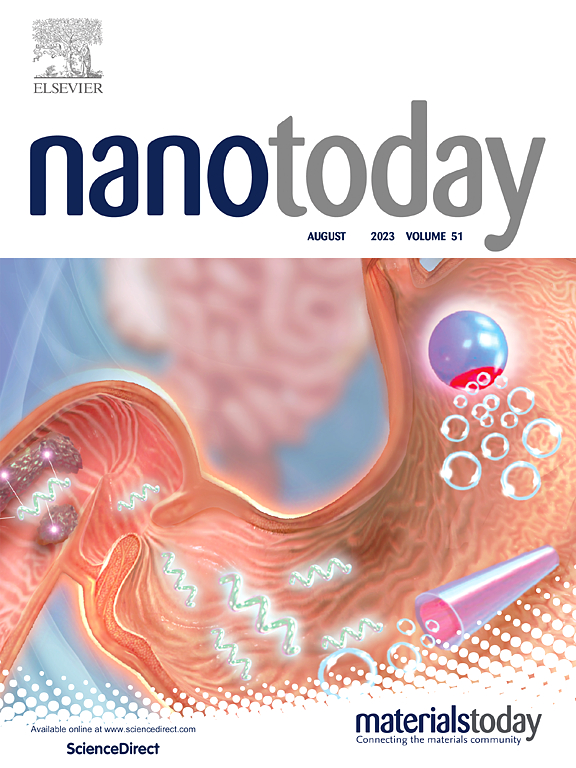强金属-支撑相互作用的动力学:通过实验和模拟方法研究 CdS 纳米棒上的铂和铂基合金
IF 13.2
1区 材料科学
Q1 CHEMISTRY, MULTIDISCIPLINARY
引用次数: 0
摘要
金属-支撑物相互作用(MSI)对支撑金属纳米粒子(NPs)的催化性能有很大影响。了解异相催化中 MSI 的机理和动态仍具有挑战性。尽管铂在催化过程中具有重要作用,但传统的 MSI 研究主要集中在金属氧化物支撑上,很少对铂和铂基合金之间的 MSI 进行比较。在本研究中,我们引入了 CdS 纳米棒作为新型支撑材料,并利用原位 TEM 电子束辐照研究了铂和铂基合金 NPs 的 MSI 行为。我们的研究结果表明,铂氮氧化物与 CdS 具有很强的 MSI,并且由于铂具有很高的表面能,在铂氮氧化物上形成了封装层。另一方面,铂基合金的 MSI 较弱。这些实验通过直接热退火四小时进行了验证。分子动力学模拟用于解释观察到的行为,为了解铂和铂基合金之间的表面能差异如何影响它们与 CdS 纳米棒的相互作用提供了见解。这些发现为催化剂设计提供了宝贵的见解,突出了控制 MSI 强度以优化异质体系催化性能的潜力。本文章由计算机程序翻译,如有差异,请以英文原文为准。
Dynamics of strong metal-support interactions: Investigating Pt and Pt-based alloys on CdS nanorods through experimental and simulated approaches
The catalytic performance of supported metal nanoparticles (NPs) is greatly affected by metal-support interaction (MSI). Understanding the mechanisms and dynamics of MSI in heterogeneous catalysis remains challenging. Traditionally, MSI studies have focused on metal oxide supports and rarely compared MSI between Pt and Pt-based alloys, despite the importance of Pt in catalysis. In this study, we introduce CdS nanorods as a novel support material and investigate the MSI behavior of both Pt and Pt-based alloy NPs using in situ TEM electron beam irradiation. Our findings show that Pt NPs have strong MSI with CdS and that encapsulation layers form over Pt NPs because Pt has the high surface energy. On the other hand, Pt-based alloys have weaker MSI. These experiments were validated by direct thermal annealing for four hours. Molecular dynamics simulations were used to explain the observed behavior, providing insights into how the surface energy differences between Pt and Pt-based alloys influence their interactions with CdS nanorods. These findings offer valuable insights into catalyst design, highlighting the potential for controlling MSI strength to optimize catalytic performance in heterogeneous systems.
求助全文
通过发布文献求助,成功后即可免费获取论文全文。
去求助
来源期刊

Nano Today
工程技术-材料科学:综合
CiteScore
21.50
自引率
3.40%
发文量
305
审稿时长
40 days
期刊介绍:
Nano Today is a journal dedicated to publishing influential and innovative work in the field of nanoscience and technology. It covers a wide range of subject areas including biomaterials, materials chemistry, materials science, chemistry, bioengineering, biochemistry, genetics and molecular biology, engineering, and nanotechnology. The journal considers articles that inform readers about the latest research, breakthroughs, and topical issues in these fields. It provides comprehensive coverage through a mixture of peer-reviewed articles, research news, and information on key developments. Nano Today is abstracted and indexed in Science Citation Index, Ei Compendex, Embase, Scopus, and INSPEC.
 求助内容:
求助内容: 应助结果提醒方式:
应助结果提醒方式:


